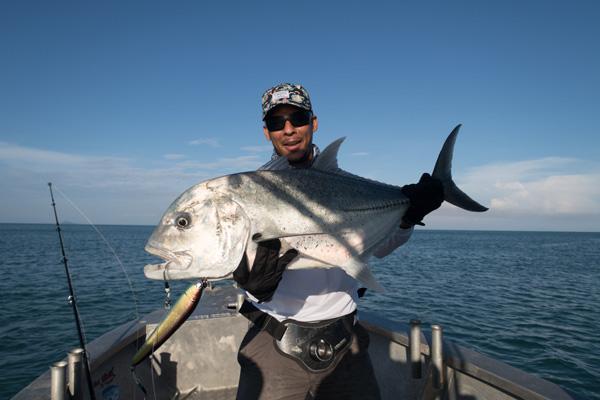When I was growing up, Myanmar was one of those places from which you didn’t hear anything good. Mass media and the movies portrayed it as a country where nearly everyone was oppressed, and barring a large-scale revolution, nothing good was likely to happen. I am quite pleased to report what I saw there this spring was a land of hope and optimism.
My mates and I visited specifically for giant trevally (GT) fishing, which took us on a journey well off the tourist track and gave us a chance to pass through local townships and tribal areas as we moved by car from the Thai/Myanmar land border to the Andaman Sea coast.
Along the way we observed folks living simple yet content lives. Despite arriving with the notion we would be off the grid for the better part of a week, it was surprising to see kids sporting street wear and dyed hair speeding around on new scooters or texting one another on smart phones.
Once we got on the mother boat that took us to a small archipelago about 120 kilometers south of the Dawei coastal township, we were even more surprised to learn that multiple families of fishermen resided on the larger islands.
For four days straight we bounced around from point to point, timing our sessions with the tidal movement. We cast large handmade stickbaits and poppers at clusters of exposed rocks where we reckoned there might be a few GT hiding.
These fish are ambush predators that in many instances will not chase lures that do not enter their strike zone. This means it’s important to present lures accurately and often—think “fish of a thousand casts.”
My fishing companions were GT novices like me, but our results were surprisingly good, probably due in no small part to the fishery just recently being opened for recreational angling.
The head guide explained he had been a commercial fishermen for years and got the idea to retool for sport fishing after numerous encounters with huge GT when he dove the same points for lobster.
The specimens we captured weren’t big, but plentiful and a good fit for four guys who, despite having plenty of experience tussling with large tuna in the open ocean, were complete novices when it comes to pulling GT away from jagged rocks.
These fish are often referred to as “thugs” or “gangsters of the reef” because they fight hard and dirty and spank nearly every newbie the first time they go toe to toe with a big one.
Perhaps the most surprising thing we witnessed was a feeding behavior exhibited by many pelagic fish, but not known to happen so frequently with GT. Several times a day, they’d begin voraciously surface feeding on smaller baitfish giving us a chance to race over in the boat and cast into the boil, almost certain to hook up.
This high paced “run-and-gun” style of casting is pretty much the same as what my friends and I experience when targeting tuna, but in this case, we had to flip a switch and remember to bear down and drag the GT to the boat once we had one on the line.
By the end of the fourth day, we were pretty beat from making hundreds of casts and fighting multiple fish, but still wondering if we had what it took to land a monster GT. Perhaps we’ll get a chance to try again in the not-too-distant future.
For many, GT fishing is usually a costly and time-consuming undertaking requiring each participating angler to fork over at least five grand and travel 48 hours just to get to the fish. For this trip, reaching the islands was definitely a trek, but the cost was probably less than half of what is normally required, and the fishing, food and hospitality were first rate.
On the ride back to Bangkok, my buddies and I kept discussing what the skipper had told us about new points where he had yet to take any clients as well as some unexplored areas where no one is believed to have ever casted for GT.
To be one of the first to fish such a point is the dream of every GT angler—one that’s increasingly difficult to realize as the world gets smaller. The necessity to travel farther distances to the most remote corners of the ocean make the cost and logistics of such endeavors a high hurdle as well. Still, every year rumors and speculation float around the ether, and every hardcore enthusiast is keeping his ear to the ground for news of the next GT Shangri-La.
Were it not for the low cost of this particular outfit, my mates and I would not be looking hard at making a return in the near future, but we’re seriously considering it if the captain will organize an exploratory trip later this year. My trophy GT awaits.
Now is a great time to travel to Myanmar, not just because it’s inexpensive, but also because it’s an unspoiled and pleasant place to be. The people we met were all kind and happy to meet visitors from overseas. Although we spent most of our time offshore, it was clear there is an organized move to develop the country’s tourism economy, and I’m sure there are plenty of possibilities for exploring the cities and smaller townships. It’s definitely worth the trip.
GT fishos looking to get into first rate topwater plugging can contact Garamuu Myanmar to get info on open dates.
